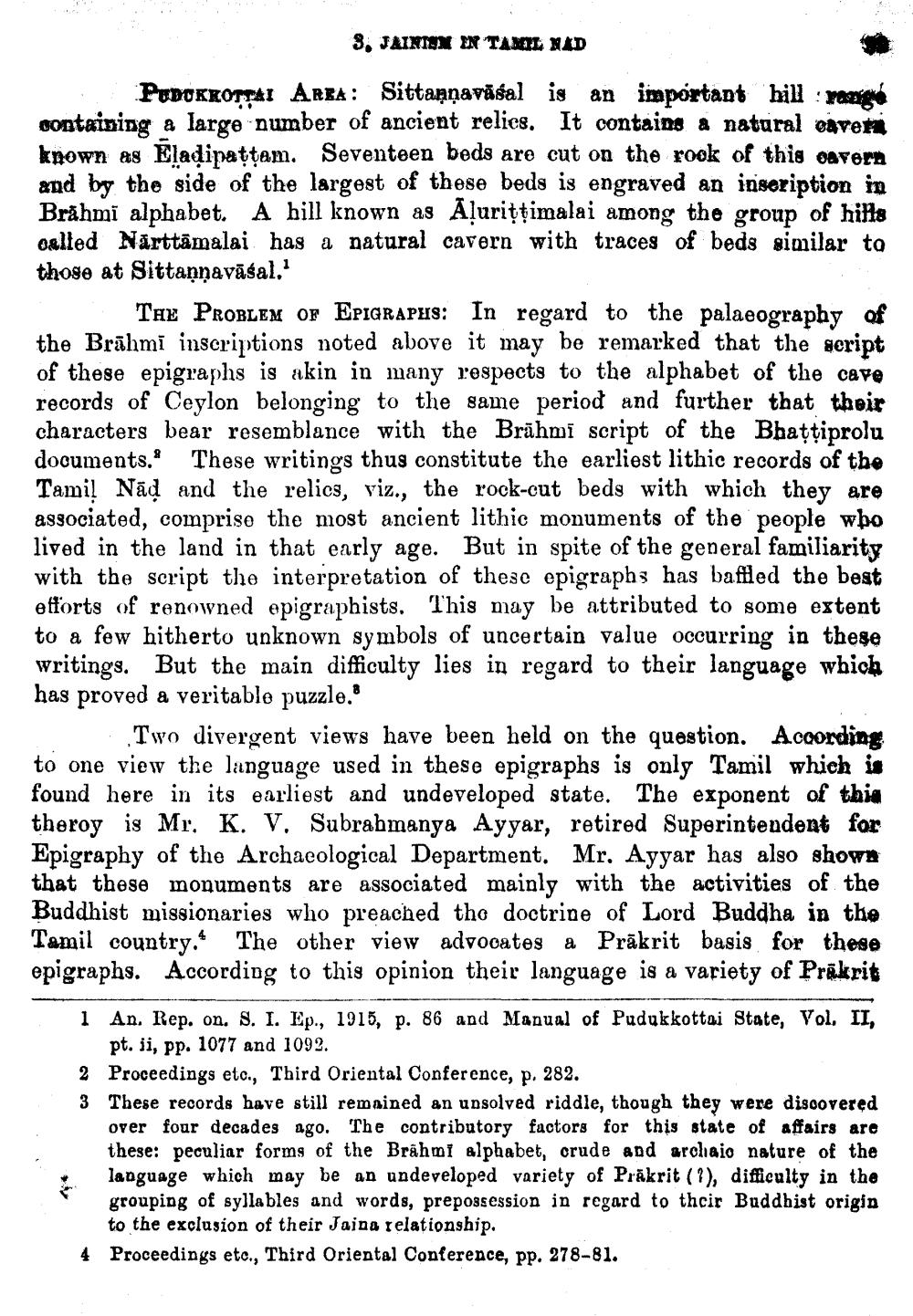________________
3. JAINISM IN TAMIL NAD
PUDUKKOTTAI AREA: Sittanṇavasal is an important hill: range containing a large number of ancient relics. It contains a natural cavera known as Eladipattam. Seventeen beds are cut on the rook of this cavern and by the side of the largest of these beds is engraved an inseription in Brahmi alphabet. A hill known as Aluriṭṭimalai among the group of hills called Närttamalai has a natural cavern with traces of beds similar to those at Sittanṇavāśal.1
THE PROBLEM OF EPIGRAPHS: In regard to the palaeography of the Brahmi inscriptions noted above it may be remarked that the script of these epigraphs is akin in many respects to the alphabet of the cave records of Ceylon belonging to the same period and further that their characters bear resemblance with the Brahmi script of the Bhattiprolu documents." These writings thus constitute the earliest lithic records of the Tamil Nad and the relics, viz., the rock-cut beds with which they are associated, comprise the most ancient lithic monuments of the people who lived in the land in that early age. But in spite of the general familiarity with the script the interpretation of these epigraphs has baffled the best efforts of renowned epigraphists. This may be attributed to some extent to a few hitherto unknown symbols of uncertain value occurring in these writings. But the main difficulty lies in regard to their language which has proved a veritable puzzle.
Two divergent views have been held on the question. According to one view the language used in these epigraphs is only Tamil which is found here in its earliest and undeveloped state. The exponent of this theroy is Mr. K. V. Subrahmanya Ayyar, retired Superintendent for Epigraphy of the Archaeological Department. Mr. Ayyar has also shown that these monuments are associated mainly with the activities of the Buddhist missionaries who preached the doctrine of Lord Buddha in the Tamil country. The other view advocates a Prakrit basis for these epigraphs. According to this opinion their language is a variety of Prakrit
1 An. Rep. on. S. I. Ep., 1915, p. 86 and Manual of Pudukkottai State, Vol. II, pt. ii, pp. 1077 and 1092.
2 Proceedings etc., Third Oriental Conference, p. 282.
3 These records have still remained an unsolved riddle, though they were discovered over four decades ago. The contributory factors for this state of affairs are these: peculiar forms of the Brahmi alphabet, crude and archaic nature of the language which may be an undeveloped variety of Prakrit (1), difficulty in the grouping of syllables and words, prepossession in regard to their Buddhist origin to the exclusion of their Jaina relationship.
4 Proceedings etc., Third Oriental Conference, pp. 278-81.




